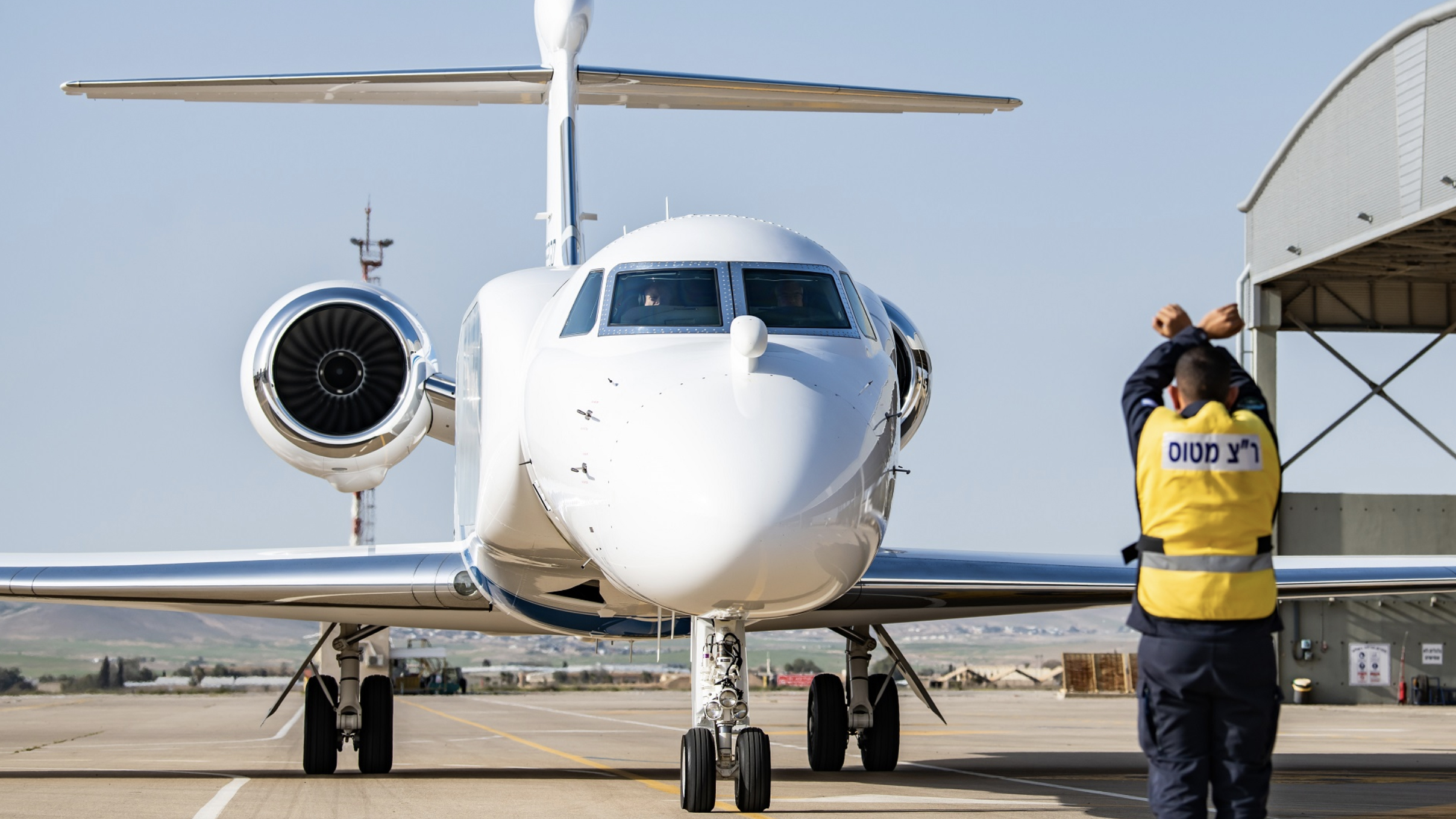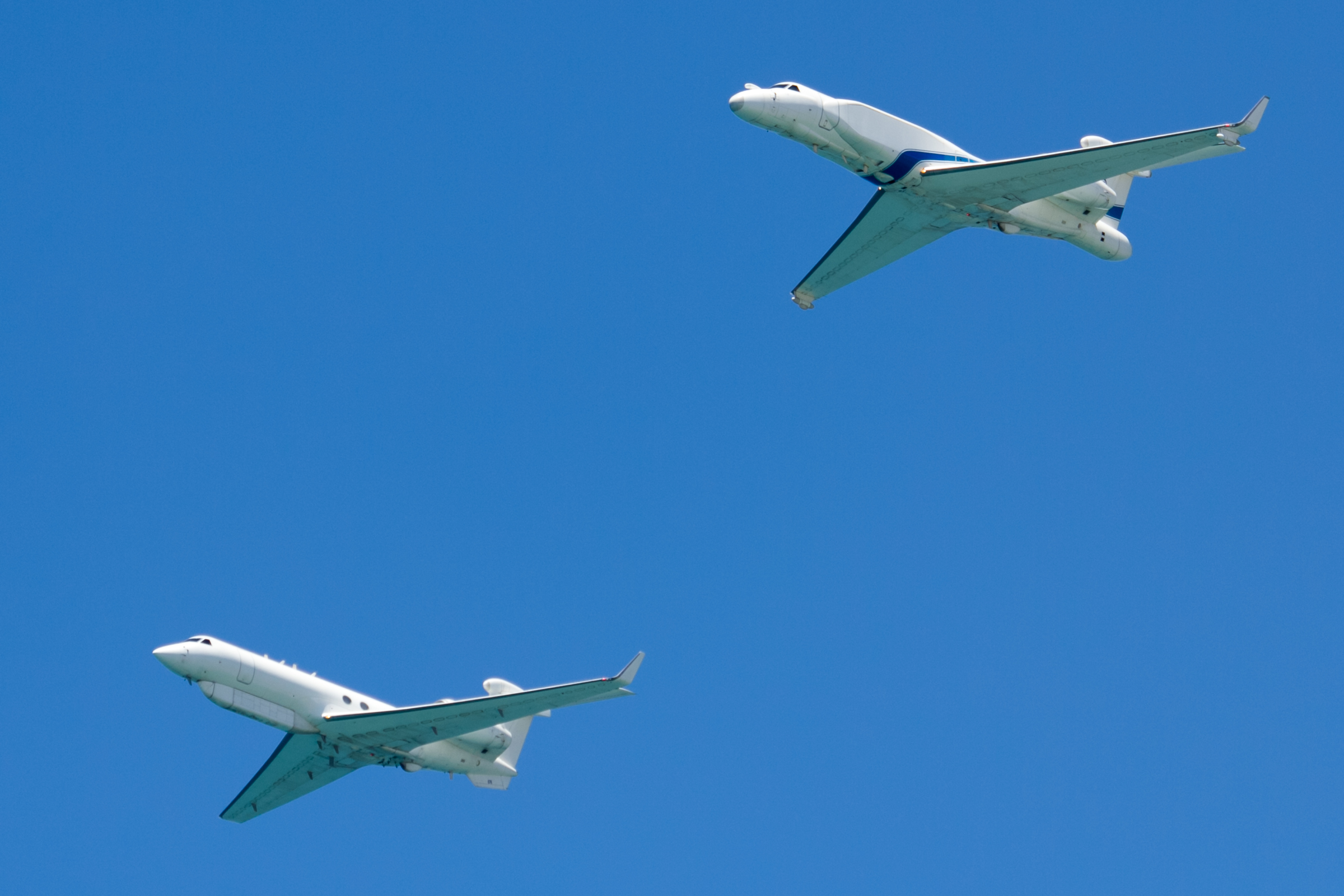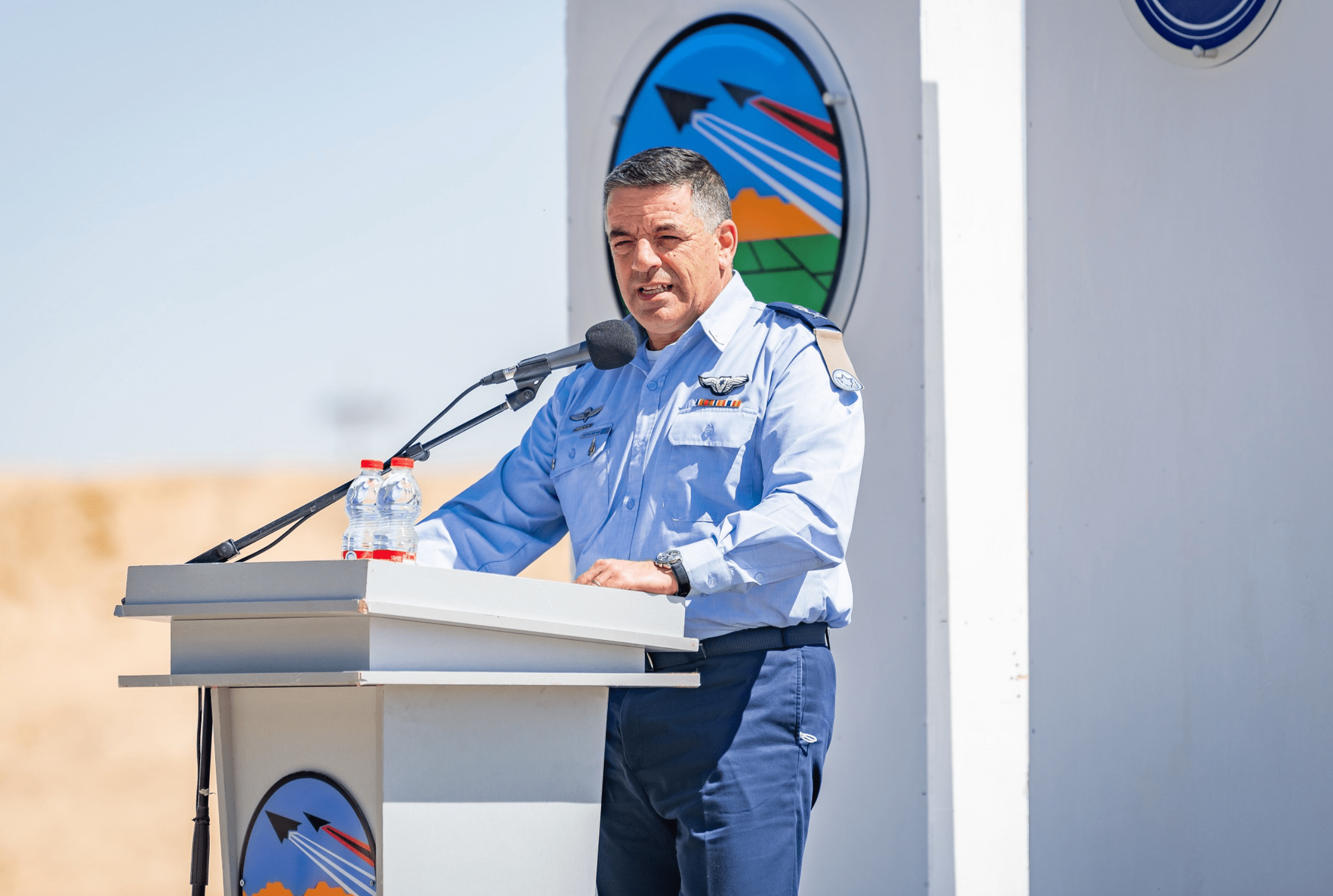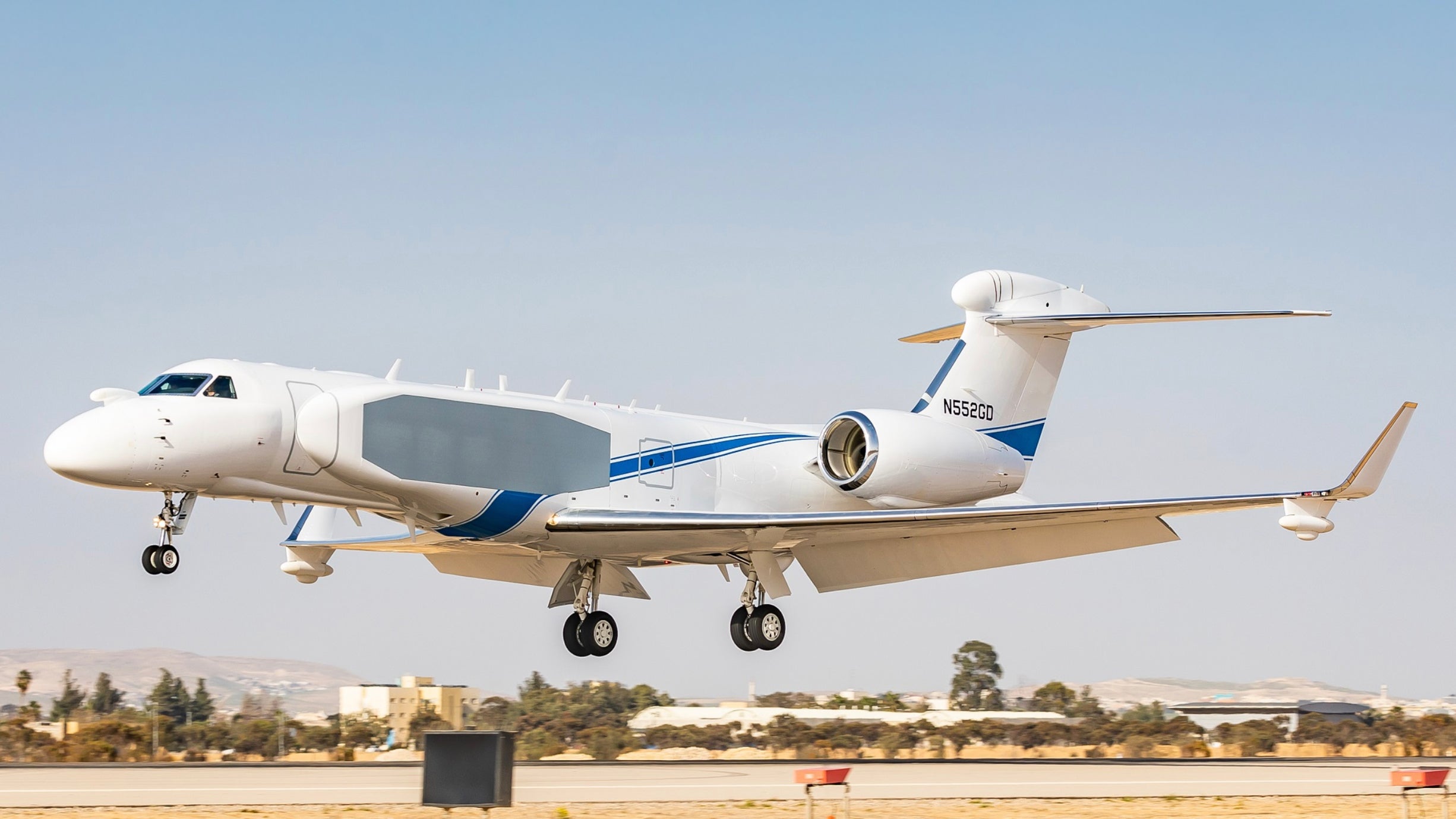The Israeli Air Force has unveiled a new multi-mission intelligence-gathering aircraft, the Nachshon Oron. The new aircraft will join an existing fleet of airborne early warning and signals intelligence platforms, all based on the Gulfstream bizjet airframe, but will add important new capabilities, including those focused on the maritime domain.
The Israeli Air Force (IAF) announced yesterday that the Oron had been formally unveiled by 122 Squadron, “Nachshon,” a specialist intelligence, surveillance, and reconnaissance (ISR) unit at Nevatim Air Base in Israel’s Negev desert. The aircraft, based on a Gulfstream G550 airframe, arrived in Israel last month, after delivery from the United States where it was manufactured and flight-tested. It wore the temporary registration N552GD for its delivery flight, which took it via a stopover in Shannon, Ireland.

Exactly how many examples of the Oron the IAF will acquire has not been revealed, nor whether it is intended to supplement or to eventually replace some of the service’s existing three Shavit (signals intelligence) and two Eitam (airborne early warning and control) aircraft. These are also flown by 122 Squadron and are based on Gulfstream 500/550 executive jet airframes.
The mission avionic suite aboard the new platform is being developed for the Israeli Ministry of Defense by Israel Aerospace Industries (IAI), which described it as “the world’s most advanced intel (ISR) mission aircraft.” However, the mission systems have not yet been integrated, a process that will take up to two years to complete, after which the aircraft will be declared operational. Already, nine years have been spent on designing and developing the aircraft and its subsystems.
“The Oron is yet another manifestation of the IAF’s increasing effectiveness,” said the IAF commander, Major General Amikam Norkin, during the aircraft’s acceptance ceremony. “The aircraft adds another layer to the IAF’s current operational and strategic capabilities, which allow for continued air superiority in the Middle East and an ability to defend Israel’s skies and ensure its security.”
Outwardly, the Oron appears similar to the Eitam, with prominent “cheek” radomes grafted onto the sides of its fuselage. In the Eitam, these contain antennas for the Elta EL/M-2085 active electronically scanned array (AESA) radar, with others in the nose and tail helping to provide 360-degree coverage. These radars are likely to be retained on the Oron but have almost certainly been upgraded — the Eitam first entered service back in 2006.
The Shavit, meanwhile, is configured for the signal intelligence (SIGINT) mission and entered IAF service in 2005. It is fitted with ground-scanning radar capable of ground moving target indicator (GMTI) and synthetic aperture radar (SAR) imaging in a long fairing below the fuselage and examples are frequently seen operating over the Mediterranean, off the Syrian coast.

The Oron’s advanced sensors — including radar — are intended to survey large swaths of land, air, and sea, and the aircraft itself will bring together three discrete missions: aerial imaging, airborne early warning and control, and maritime intelligence-gathering.
“The majority of these capabilities already exist in our squadron and the Maof Rahav unit [a joint IAF and the Israeli Intelligence Corps], however, with the new aircraft, we managed to condense them all onto a single flight platform,” explained the deputy commander of the 122 Squadron, identified only as Major I.
In addition to its more advanced onboard systems, compared to the Shavit and Eitam, the Oron also has workstations for a larger number of mission crew, including intelligence person to analyze the collected data in real-time. The precise number of crew was not disclosed, but the original Eitam jet is understood to carry at least six operators, plus two flight crew. It also has the ability to send the information it collects to ground stations for exploitation.

“We’ll need to choose the right personnel to perform several missions during a flight,” explained Major I., reflecting the fact that the aircraft will be able to perform a wide range of operational missions even in a single sortie.
In fact, so significant is the aircraft’s multi-mission capability that the IAF is already considering whether operating it will require changes to the squadron’s organizational structure as well as new types of mission profile compared to the Shavit and Eitam.
Israeli media sources are already suggesting that the Oron will have particular relevance to intelligence-gathering and target identification missions directed against objectives in Iran, Iraq, and Yemen, and elsewhere in the region.
“The IDF and the air force already have a variety of intelligence-collection capabilities, but the Oron strengthens our superiority and our ability to operate in the second and third tiers and to move between fronts rapidly and over a long period of time,” IAF chief Amikam Norkin told the Times of Israel. Second-tier countries are those that have been identified as posing a direct threat to Israel but don’t share any borders with it, like Iraq and Yemen, while the third tier covers threat countries that are located even further away, primarily Iran.
Yemen has become the focus of increased Israeli attention of late after reports emerged that Iranian-backed Houthi rebels operating there now possess Iranian-supplied “suicide drones” capable of reaching Israeli targets. More recently, Iraq has also become the focus of Israeli attention as it seeks to prosecute Iranian proxies operating in that country, too.
Then there are the repeated Israeli attacks launched against Iranian-backed militia targets in Syria, where Iran has been seeking to establish an increasingly robust permanent military presence, from where it can, in turn, support militant groups in the region, including providing advanced weapons to Hezbollah in Lebanon.
Last December, IDF Spokesperson Hidai Zilberman was quoted by the Times of Israel as having told a Saudi news outlet that Iranian proxies operating in Iraq or Yemen were capable of attacking targets in Israel and he pointed to the threat posed by Iranian-supplied unmanned aerial vehicles and “smart missiles,” in particular.
The Oron, once fully operational, could be used to not only monitor these kinds of threats, at a considerable distance from Israel, but also coordinate any potential offensive action that might be taken against them.
According to the Times of Israel, Brigadier General Yaniv Rotem, head of research and development at the Israeli Ministry of Defense said the new aircraft would allow the military to more easily identify targets for attack, using mission systems supported by artificial intelligence.
“We have made a machine that knows how to create and expose targets in all weather, in very short periods of time — mere seconds — over plots of land of thousands of [square] kilometers and at ranges necessary for attacks,” Rotem said.
The fact that multiple types of intelligence can be brought to bear from a single platform will allow for rapid fusion of those intelligence types to create a more complete picture of the situation at any given time. This actionable intelligence could then be leveraged for prosecution by other tactical platforms. Not long ago, the U.S. Air Force was looking for a very similar capability, but this was mysteriously passed over. We believe this capability set is still being pursued by the USAF, albeit via an unmanned stealthy drone form that is highly networked in nature and remains hidden in the shadows at this time.

Yoav Turgeman, vice president of IAI, reiterated that the all-indigenous equipment onboard the Oron “will improve the ability of the [Israel Defense Forces] on a number of fighting fronts, principally in the air force’s abilities to conduct strikes.”
This kind of capability has already been proven in combat by the earlier Eitam, during the three-week Israeli offensive in the Gaza Strip in December 2008 and January 2009. On that occasion, this aircraft located ground targets for airstrikes and generated a complete picture of the operational theater for Israeli commanders.
As well as identifying targets, including those on the move, the Oron would likely serve as a communications node linking together the various branches of the Israel Defense Forces and their assets — including unmanned assets — in any large-scale operation. With the F-35I stealth fighter, known locally as the “Adir,” now well established in IAF service, it seems likely that the Oron will also be expected to analyze and disseminate the huge quantity of information gathered by this aircraft, too.
Aside from being a critical node in any potential IAF airstrike against targets in the so-called second and third tiers, and operations closer to home, the Oron’s new maritime intelligence-gathering capability is also highly significant. As Israel’s maritime security interests expand beyond the eastern Mediterranean to include activities in the waters around Yemen, for example, a platform of this kind is of particular importance, while Israel has also been suspected of being behind a series of clandestine attacks on Iranian vessels.
The Oron could also provide a useful adjunct to the Israeli Navy’s new Sa’ar 6 class corvettes, which you can read about in detail here. Among these warships’ key missions will be defending offshore gas platforms within Israel’s exclusive economic zone (EEZ) in the eastern Mediterranean. Having a long-endurance aerial surveillance presence to monitor this area would help protect a major strategic asset that provides the majority of Israel’s energy requirements.
Overall, the unveiling of the Oron demonstrates again the wide-ranging modernization drive that the IAF is currently engaged in. The fact that the Oron will be able to conduct a variety of critical roles in the course of a single mission suggests it’s likely to be a regular participant in a range of peacetime and combat scenarios once fully operational.
Contact the author: thomas@thedrive.com
